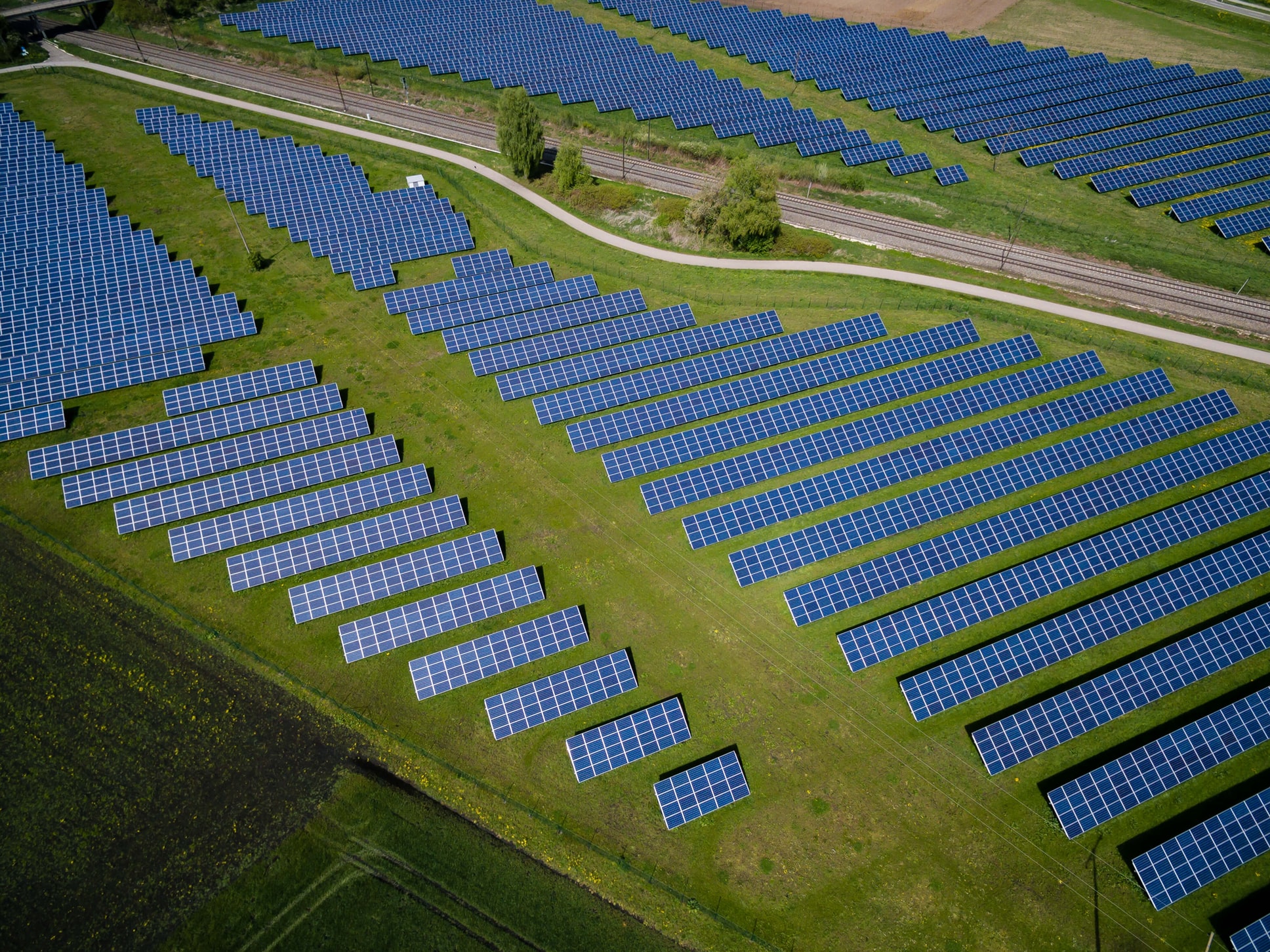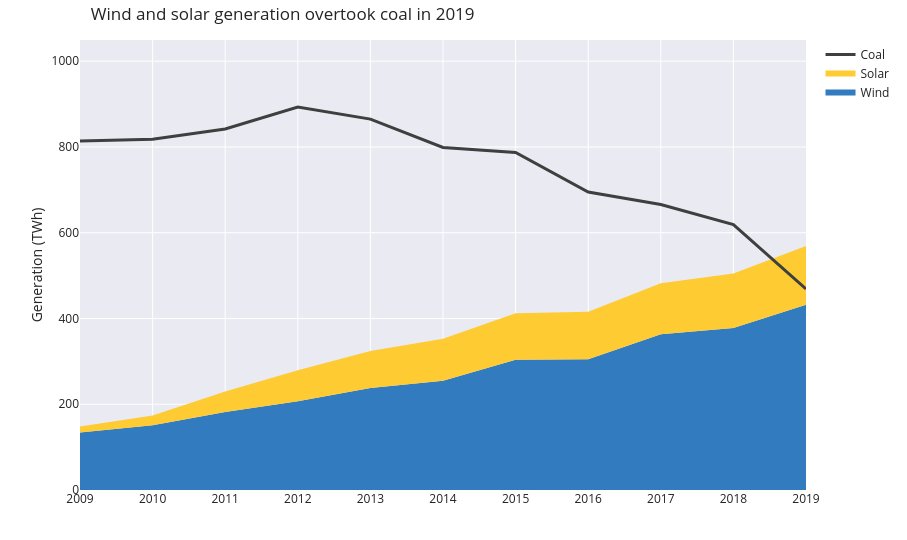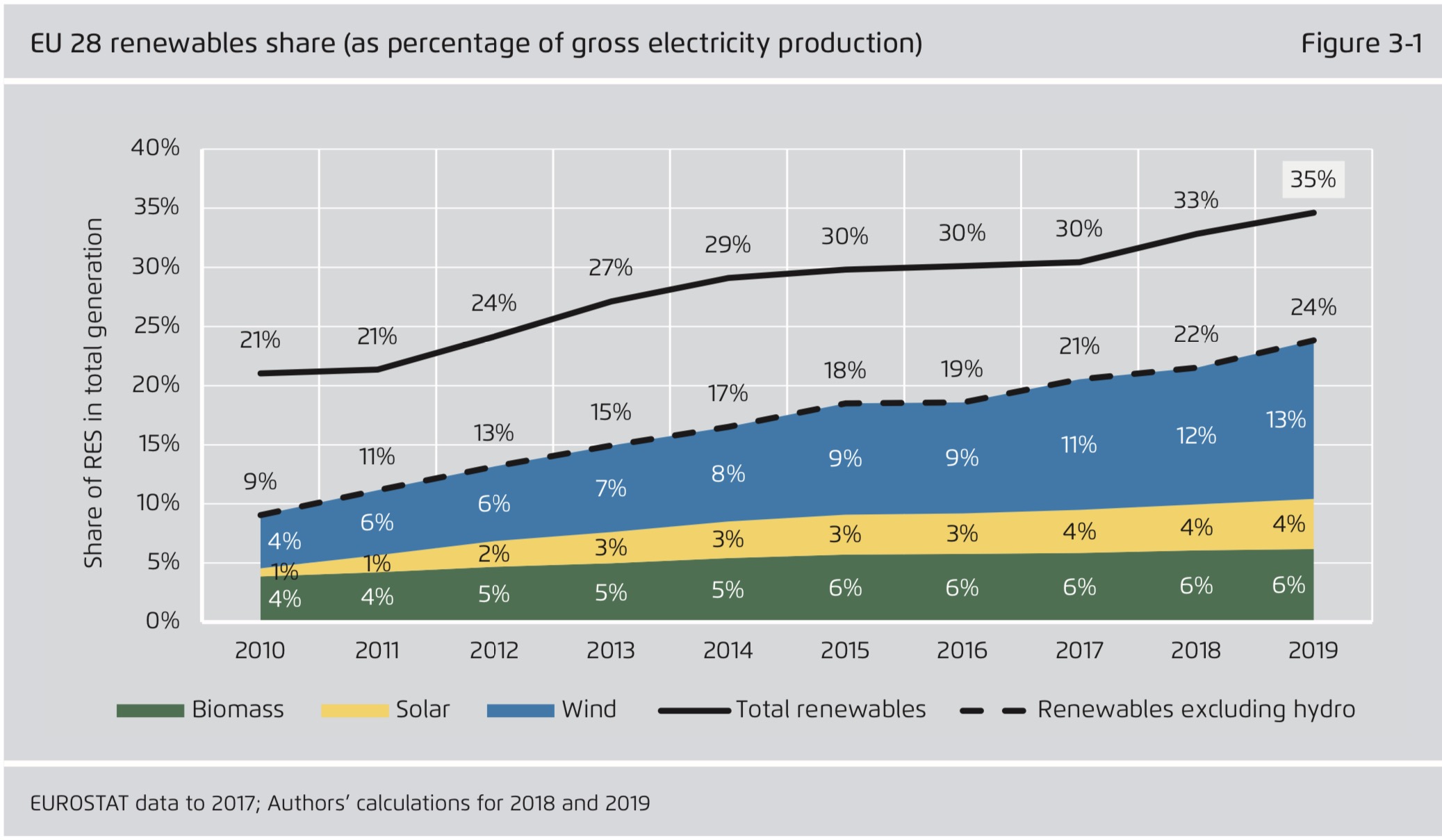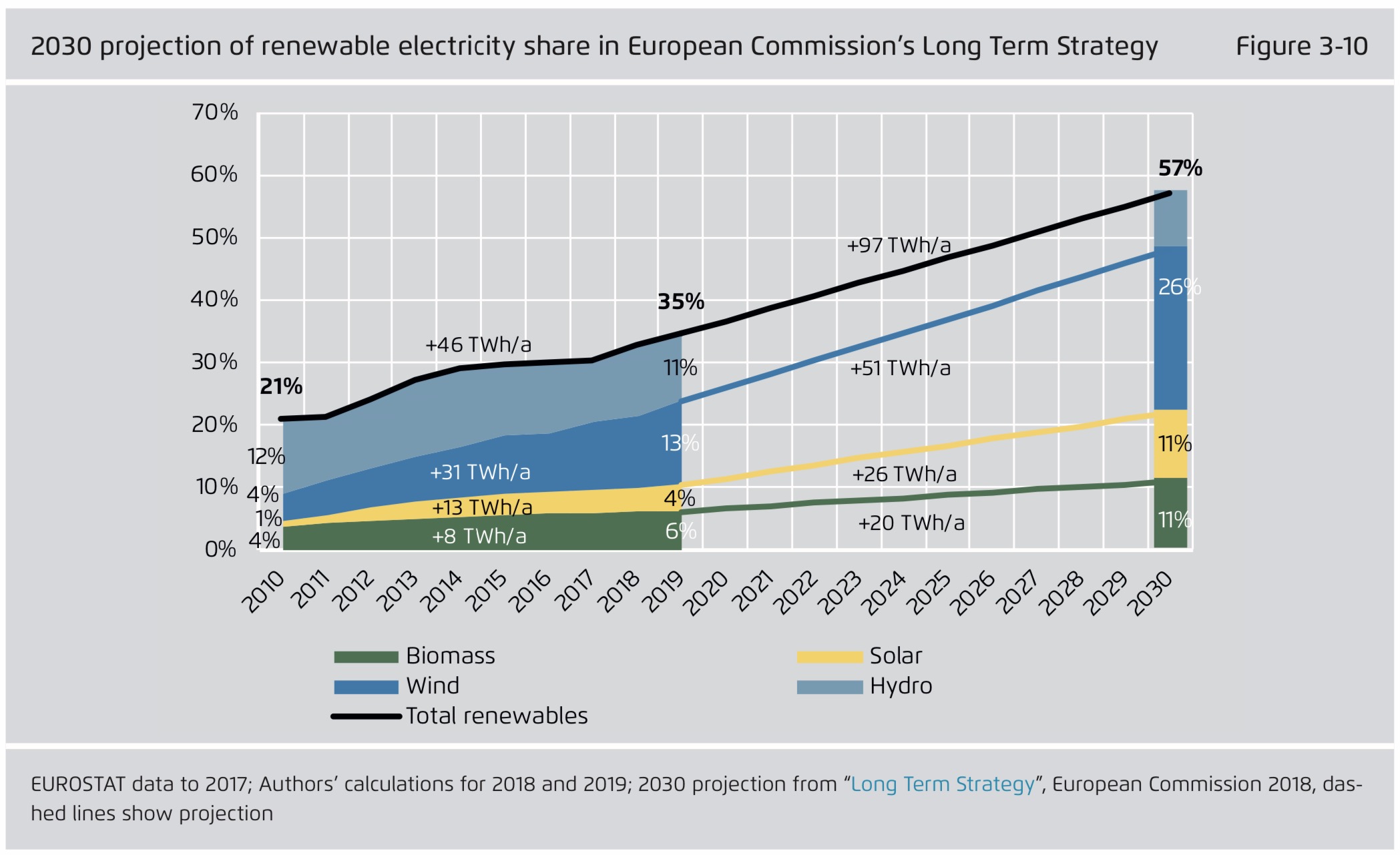
- Sustainable Planet -
- 5mins -
- 80 views
European Power Sector Report 2019: Coal collapses, overtaken by wind and solar for the first time
In 2019, wind and solar provided 18% (569TWh) of EU electricity, while coal fell to just 15% (469TWh), when just five years ago, the EU generated twice as much from coal as it did from wind and solar.
European Power Sector Report 2019 shows coal overtaken by renewables
The power sector is playing a leading role in the decarbonisation of Europe, so it is critical to track the progress of the electricity transition as accurately and timely as possible. For the fourth year in a row, Sandbag and Agora Energiewende have joined forces to provide a current snapshot on the European electricity sector transition. Key topics addressed in the report include renewables growth, conventional power generation, electricity consumption and CO2 emissions. They provide their best assessment of 2019 electricity consumption, generation and emissions by country. BrightVibes brings you the highlights.

Report on Europe’s electricity transition looks good for renewables
This month, climate think-tank Sandbag launch their sixth annual report, “The European Power Sector in 2019”, in partnership with the German think-tank, Agora Energiewende. The report aggregates data from every EU country, to present the latest insights on Europe’s electricity transition. The data is provided open source and free to download for you to make your own analysis. Below are the year’s highlights.
- For the first time, wind and solar provided more electricity than coal — In 2019, wind and solar provided 18% (569TWh) of EU electricity, whilst coal fell to just 15% (469TWh). Only five years ago, the EU generated twice as much from coal as it did from wind and solar.
- Electricity generation from coal collapsed — In just one year, coal generation fell 24% in the European Union, and is now less than half the level in 2007. This led to a 12% fall in European power sector CO2 emissions in 2019 alone – the biggest fall since at least 1990. Many countries in western Europe saw significantly larger year-on-year falls while eastern Europe lagged behind. Half of the coal was replaced by wind & solar, and half was replaced with gas. Wind and solar generation rose because of new capacity installations, and gas generation rose as higher CO2 prices and low gas prices boosted the competitiveness of gas power plants in relation to coal generation.
- The countries with the biggest increase in wind and solar, saw the biggest falls in coal — From 2010 to 2019, coal’s share of the electricity mix fell by 10 percentage points, while wind and solar combined rose by 13 percentage points. Europe’s transition avoided a bridge into gas: despite the uptick in gas generation in 2019, gas’s share is still 1 percentage point lower in 2019 than in 2010, and only 7GW of new gas plants have come online in Europe since 2014.
- Europe’s coal to clean transition looks set to accelerate — In 2019, wind capacity is estimated to have expanded by around 14GW, the second-highest amount on record, and solar by around 17GW, double last year’s rate. Meanwhile, the economics continued to shift in favour of renewables over fossil: 2019 saw record-low auction prices for offshore wind (UK) and solar (Portugal) – both below wholesale prices. Looking ahead, the wind and solar trade associations in Europe predict that the rate of new installations will accelerate.
- In 2019, two more European countries committed to phase out coal — Greece and Hungary will cease generating electricity from coal by 2028 and 2030 respectively, bringing the total countries coal-free by 2030 to 20 out of 28 countries. 2019 also saw the formation of Czechia’s Coal Commission, tasked with setting an end-date for coal.
Source: Sandbag

Key findings of the report, a summary
1. Coal generation collapsed by 24% in the EU in 2019.
Hard coal generation dropped by 32%, while lignite decreased by 16%. This development is driven by CO2 price increases and deployment of renew- ables. Gas replaced around half of the coal, solar and wind the other half. The decline of coal will con- tinue: Greece and Hungary both made commitments in 2019 to phase out coal, bringing the total of member states phasing out coal to 15. Only Poland, Romania, Bulgaria and Slovenia are yet to start.
2. The fall in coal means CO2 emissions in Europe’s power sector fell by a record 120 Mt, or 12% in 2019.
This is likely to be the largest ever fall. EU Emissions Trading Scheme (EU ETS) stationary emissions, including heavy industry, fell by 7.6% in 2019, implying that industrial emissions are likely to have decreased by only 1%. Nevertheless, overall emissions covered by the EU ETS are falling much faster than the cap; showing the central role of a further strengthening of the EU ETS to accelerate climate action in Europe.
3. Renewables rose to a new record supplying 35% of EU electricity.
For the first time, wind and solar combined provided more electricity than coal, contributing 18% of EU electricity in 2019. This is more than a doubling of market share since 2013. The increase in wind and solar generation was strong- est in western Europe, while Poland and Greece have started to engage. The rest of eastern Europe is significantly lagging behind. The economic opportunities of low-cost renewables became increas- ingly visible. 2019 saw record low auction prices for offshore wind (UK) and solar (Portugal) – below wholesale prices – and the largest wholesale price decreases in countries where wind and solar expanded most.
4. Europe’s energy transition is taking off!
The European Green Deal has put the fight against the cli- mate crisis at the very core of all EU policy work over the next five years: EU heads of state have endorsed Europe to become the first greenhouse gas neutral continent by 2050, and the EU com- mission is putting forward proposals to raise Europe’s 2030 greenhouse gas reduction target to -50% or -55% below 1990 levels. This implies power sector emissions will keep falling, even if electricity demand increases as transport, heating industry continue to electrify.
Down load the full report: Sandbag is an independent, not-for-profit climate & energy think tank. They receive funding from the European Climate Foundation and many others.
Source: Sandbag


COAL IS ON THE WAY OUT: NEW STUDY FINDS FOSSIL FUEL NOW MORE COSTLY THAN SOLAR OR WIND
The United States has officially entered the “coal cost crossover” – where existing coal is increasingly more expensive than cleaner alternatives. Today, local wind and solar could replace approximately 74% of the US coal fleet at an immediate savings to customers. By 2025, this number grows to 86% of the conflict. Learn more.

